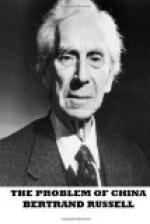He produced a map of the world, and on it pointed out the vast extent of the dominions of Philip II. Thereupon Masuda asked him how it was so many countries had been brought to acknowledge the sway of a single man.... “Our Kings,” said this outspoken seaman, “begin by sending into the countries they wish to conquer religieux who induce the people to embrace our religion, and when they have made considerable progress, troops are sent who combine with the new Christians, and then our Kings have not much trouble in accomplishing the rest."[44]
As Spain and Portugal were at this time both subject to Philip II, the Portuguese also suffered from the suspicions engendered by this speech. Moreover, the Dutch, who were at war with Spain, began to trade with Japan, and to tell all they knew against Jesuits, Dominicans, Franciscans, and Papists generally. A breezy Elizabethan sea captain, Will Adams, was wrecked in Japan, and on being interrogated naturally gave a good British account of the authors of the Armada. As the Japanese had by this time mastered the use and manufacture of fire-arms, they began to think that they had nothing more to learn from Christian nations.
Meanwhile, a succession of three great men—Nobunaga, Hideyoshi, and Iyeyasu—had succeeded in unifying Japan, destroying the quasi-independence of the feudal nobles, and establishing that reign of internal peace which lasted until the Restoration—period of nearly two and a half centuries. It was possible, therefore, for the Central Government to enforce whatever policy it chose to adopt with regard to the foreigners and their religion. The Jesuits and the Friars between them had made a considerable number of converts in Japan, probably about 300,000. Most of these were in the island of Kyushu, the last region to be subdued by Hideyoshi. They tended to disloyalty, not only on account of their Christianity, but also on account of their geographical position. It was in this region that the revolt against the Shogun




